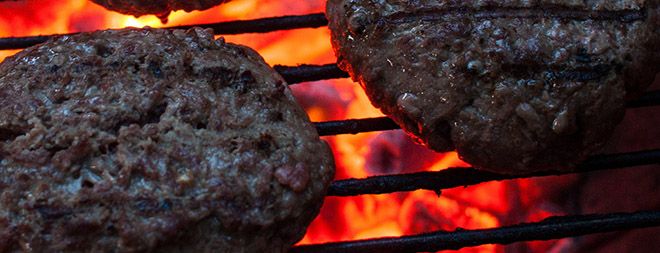Food Safety Returns To Nature

(ISNS) – Outbreaks of foodborne diseases carried by bacteria can be a nuisance at best, and deadly at worst. Researchers are looking into novel ways to keep food safe. One way to destroy these pathogens is with more pathogens.
Bacteriophages are viruses that specifically attack bacteria. These phages, as researchers call them, have evolved alongside bacteria and become very good at what they do.
Scientists are most interested in lytic phages – viruses that inject their DNA into a bacterium and then hijack the cell’s machinery to make new copies of the virus. The copies eventually burst through bacterium’s membrane, killing it, and attack neighboring cells.
Recently, a team of researchers at Purdue University in West Lafayette, Indiana developed a cocktail of different phages that was extremely effective against Escherichia coli O157:H7, the pathogen that was estimated to have caused more than 63,000 illnesses and 2,138 hospitalizations between 2000 and 2008 in the U.S.
The researchers mixed a cocktail of three phages and added it to ground beef or sprayed it on spinach. They found that the combination eliminated over 99% of E. coli O157:H7 on spinach stored at room temperature. They obtained similar results in refrigerated and room temperature beef.
These results, published online earlier this year in the Journal of Animal Science, are exciting but hardly new. Phage bio-control products are already available commercially.
One product, called ListShield, sold by Intralytix, controls Listeria monocytogenes and can be applied directly to poultry meat.
Sign up for the Live Science daily newsletter now
Get the world’s most fascinating discoveries delivered straight to your inbox.
“It’s not widely used today. It’s gaining acceptance and sales are steadily increasing, but slowly,” said Alexander Sulakvelidze, vice president of research and development, and chief scientist of Intralytix.
“It’s a microorganism – the concept of putting a virus on foods is initially hard to swallow, if you will,” Sulakvelidze said.
But phages are harmless to humans; they only target bacteria. It’s highly unlikely that they will ever evolve to cause diseases for humans or animals. The bacteria, on the other hand, are highly virulent.
“[Phages] are not human pathogens. The bacteria are the human pathogens,” said Paul Ebner, a professor of animal sciences at Purdue and the lead author of the E. coli study.
Sulakvelidze added that phage bio-control products are an alternative to chemical washes and irradiation – two mechanisms commonly used to kill bacteria in ready-to-eat food products. Phages are much more specific – usually one phage targets only one species of bacteria. They kill the pathogenic “bad” bacteria while leaving the naturally occurring, “good” bacteria intact, making a more nutritious product.
Researchers are also looking into ways to treat bacterial infections in livestock using phages, but Sulakvelidze said that results from these tests are inconclusive so far. However, if phages prove successful in this way, it would greatly reduce the need for antibiotics in livestock and potentially eliminate the need to treat food products with phages.
Naturally, there is also a push to find a use for phages in humans. Antibiotic resistance in bacteria is a crisis. According to the Centers for Disease Control and Prevention, “each year in the United States, at least two million people become infected with bacteria that are resistant to antibiotics and at least 23,000 people die each year as a direct result of these infections.”
Phages are a hopeful alternative. “Phage therapy was the big thing in the [19]20s and 30s,” said Jason Gill, a microbiologist at Texas A&M University in College Station, who was not involved in the study.
Since then, researchers have struggled to get consistent results with phages. After penicillin hit the market in the early 1940s, phage therapy was largely abandoned. But now that many bacteria are resistant to one or more antibiotics, phages are making a comeback.
Bacteria can become resistant to phages, as well. But one type of bacteria usually only develops resistance to one or two types of phages, which is why researchers use a cocktail. The probability that one type of bacteria can become resistant to multiple phages at once is extremely low, according to both Gill and Ebner.
But numerous obstacles obstruct the path to phage therapy in humans in the U.S. Regulations make phages difficult to patent. It's also relatively easy to find a similar phage in nature, said Gill.
Given those economic concerns, getting to clinical trials for human treatment takes millions of dollars that many drug companies aren’t willing to invest.
Ebner said that such worries are premature, because scientists don't know how the results from the lab will carry over to complex environments such as a pig's digestive system.
“So let’s go back a little bit and try to find which ones have the broader spectrum or grow the fastest or [destroy] the bacteria the fastest,” said Ebner.
Hope still abounds for phages, though.
“They’re the most abundant organism you can find in nature. We’re just harnessing that antibacterial process,” Ebner said.
Inside Science News Service is supported by the American Institute of Physics. Cynthia McKelvey is a science writer based in Santa Cruz, California. She tweets @NotesofRanvier.
Most Popular



